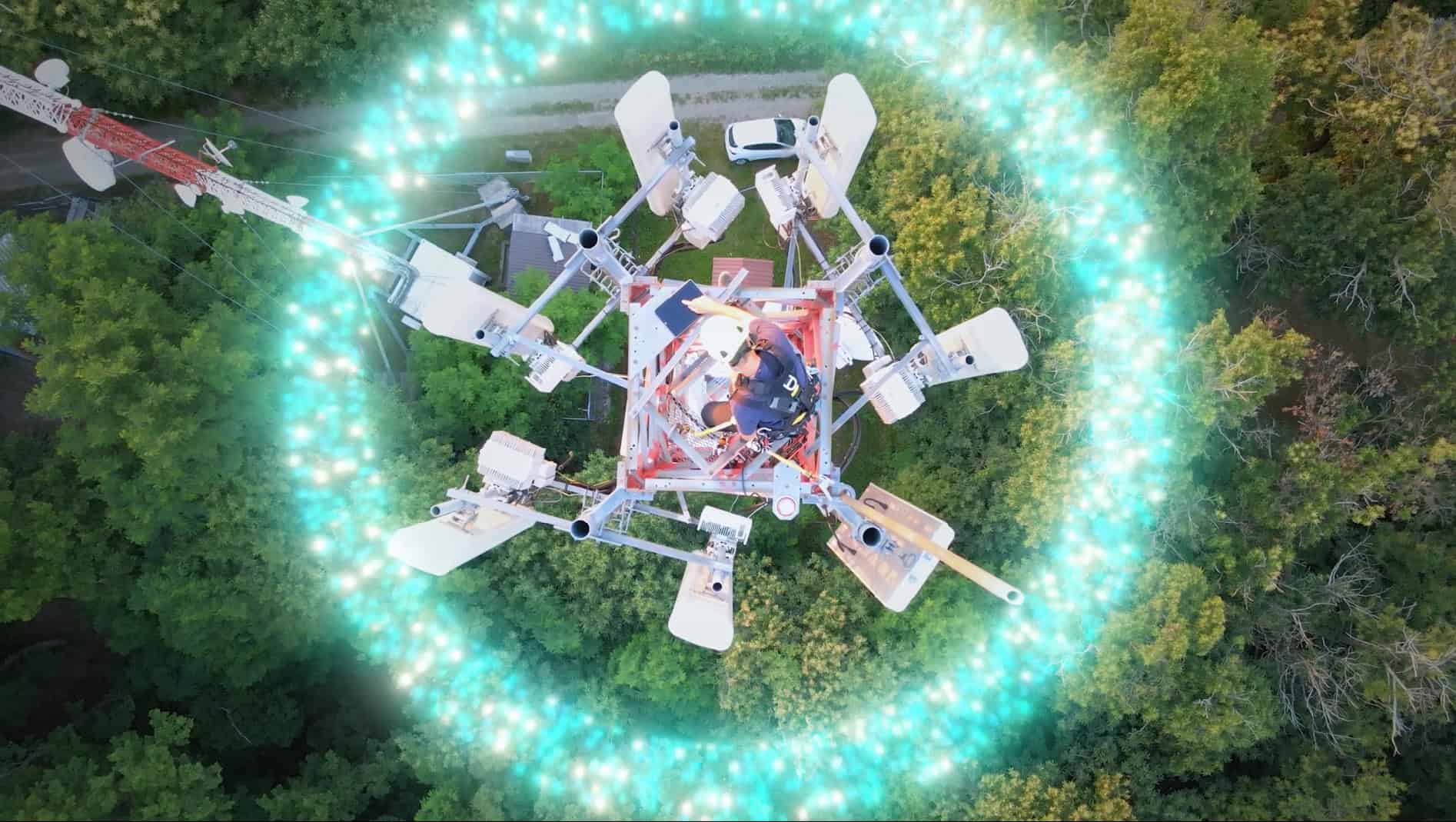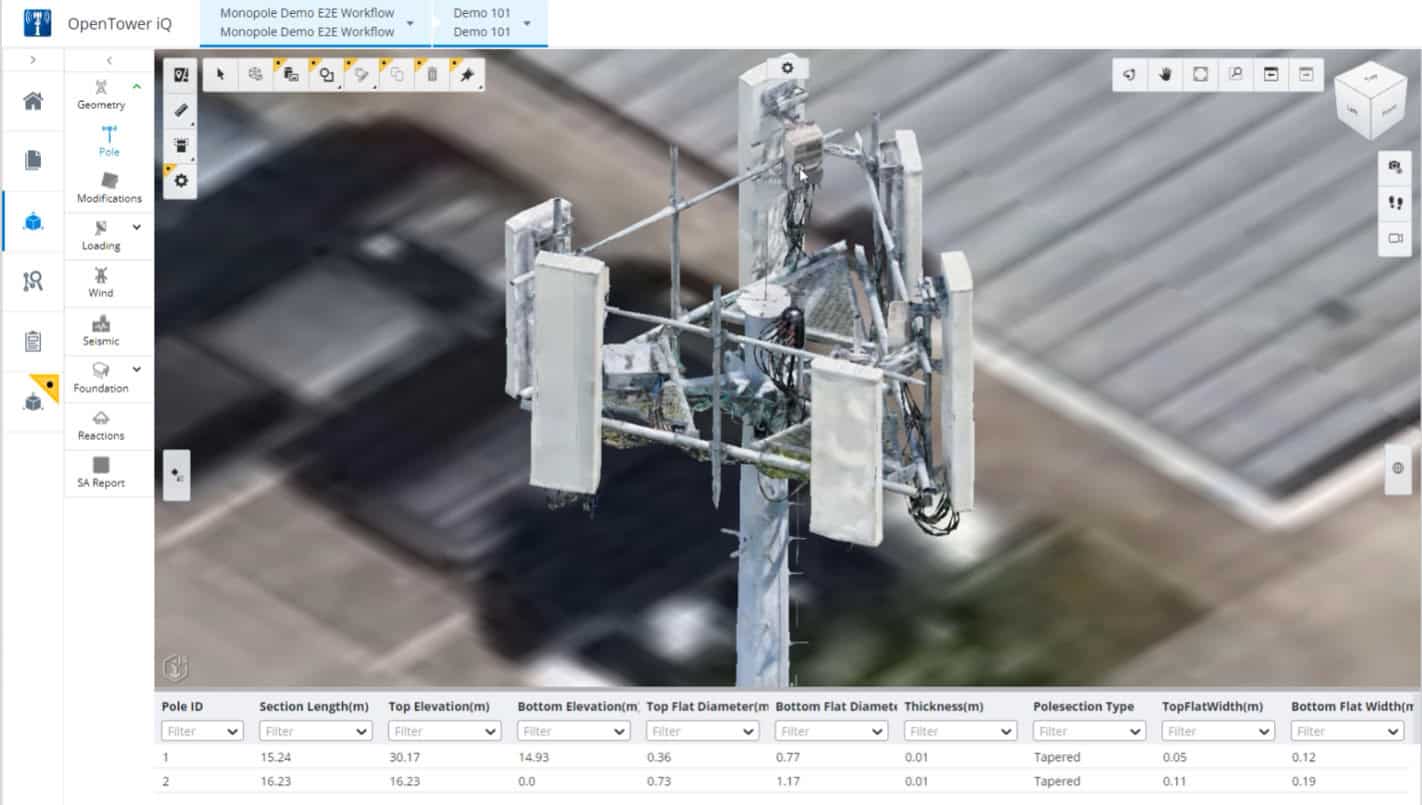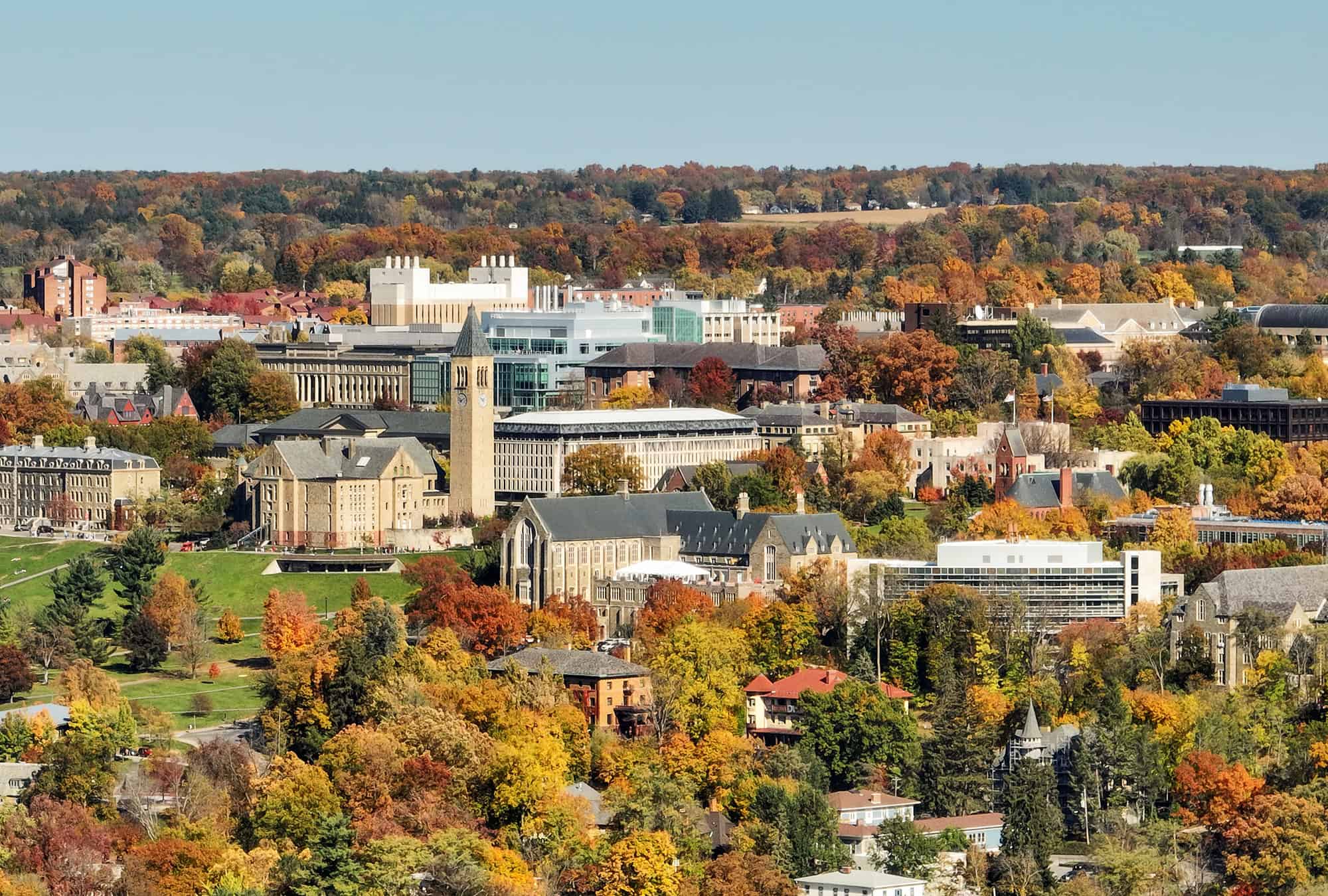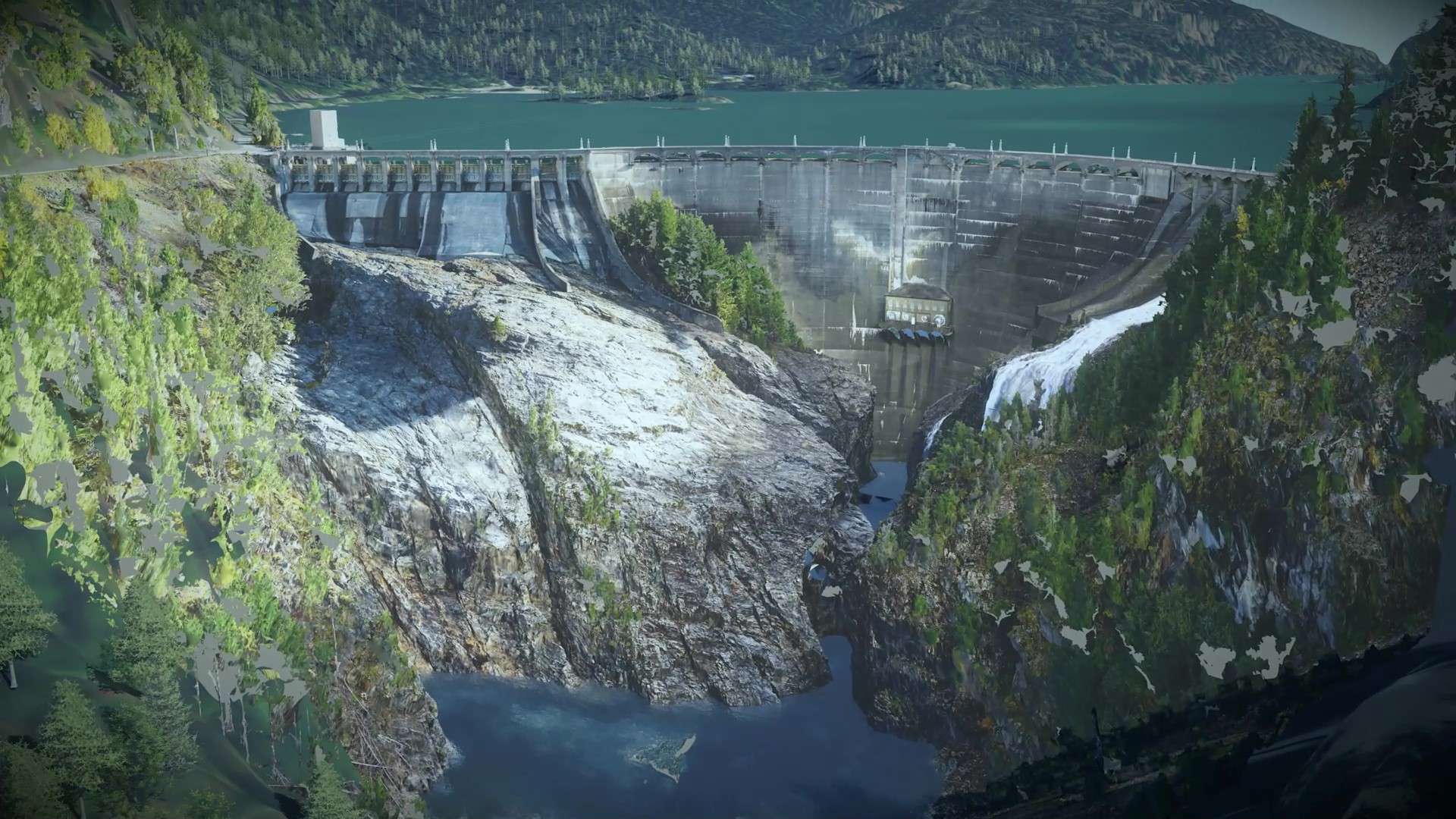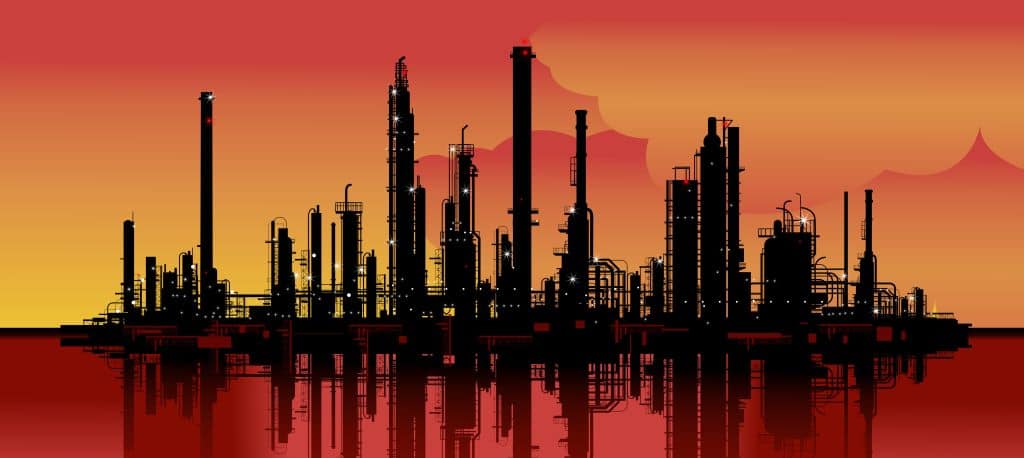Paris shines in the popular imagination as the City of Light. But its allure also flickers deep underground. There are the sewers made immortal by Victor Hugo’s Les Misérables and by Éléonore, an 8-foot Nile crocodile caught living there in 1984. There are also the famous catacombs, a cistern beneath the Paris Opera that inspired the Phantom of the Opera, and a 200-kilometer network of limestone tunnels, including a cavernous subterranean cinema, patronized by the “cataphiles,” a secretive community of underground explorers.
Still, even the cataphiles may be surprised by something else hiding even deeper in the limestone. The treasure — a series of potent geothermal aquifers dating back to the Triassic and Jurassic eras — supplies clean energy to 250,000 French homes. Now a digital model of one portion of the geothermal network, its digital twin, could help unlock more of the system’s potential. “We want to make geothermal energy easy to understand, but what we’re essentially mining is an intangible product – heat – that is not always easy to show,” said geothermal engineer Joris Popineau.
The digital twin can be updated with geological, thermodynamic, engineering and other data sets and help engineers better visualize and understand these underground reservoirs – and the production wells they need to drill to access that geothermal energy. “With more production wells and more interaction between the wells, we have lots of fresh, accurate data available to help give us realistic simulations of both past and future conditions,” Popineau said.
Canned Heat
Geothermal energy is heat created by Earth’s hot interior, so it has a dramatically lower environmental footprint than conventional heat sources, such as oil and gas. The heat radiates from our planet’s core, burning at more than 5,538 degrees Celsius (10,000 Fahrenheit), warms rocks and turns water into steam. Visitors to Yellowstone National Park in the U.S. or Iceland can see geothermal energy in action as it powers geysers and hot springs. But the heat can also serve as a potent source of energy even if it remains bottled deep underground.
The geothermal aquifers beneath Paris are part of the Paris Basin, a roughly oval-shaped region of plateaus and broad valleys that measures some 600 kilometers (about 370 miles) in diameter. Stretching from Normandy to Champagne, the basin is fed by ancient aquifers that capture rainwater and ground water. The water then trickles through layers of permeable rock more than 2 kilometers (1.25 miles) underground.
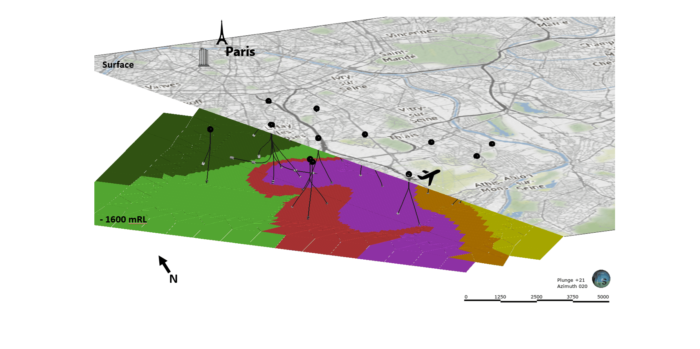 Above: Representation of the geothermal wells and the sedimentary reservoir rock types underneath the South Paris area. Top image: Drilling rig on site at Bonneuil-sur-Marne, Paris, France. Source: Antoine Boirleaud (SMP)
Above: Representation of the geothermal wells and the sedimentary reservoir rock types underneath the South Paris area. Top image: Drilling rig on site at Bonneuil-sur-Marne, Paris, France. Source: Antoine Boirleaud (SMP)Water drops on burning rocks
Popineau has been studying the massive Dogger aquifer in the southeast of the Paris Basin. The aquifer contains layers of sedimentary rock loaded with minerals, various clays, limestones and chalk. While unfit for human consumption, the brackish water at the bottom of the basin is a powerful source of geothermal energy that has been used to heat homes in the area since the 1970s.
To access the water, engineers drill deep and narrow wells – some 15 centimeters (about 6 inches) across – to tap hot brine that reaches 75 Celsius (167 Fahrenheit). Teams use some of that geothermal energy to heat homes and then inject brine, cooled down to about 40 Celsius (104 Fahrenheit), back into the ground. This process, known as the “doublet” concept, helps sustain the cycle by maintaining aquifer pressure and allowing quicker reheating of the returned brine by the basin’s burning rocks.
 Representation of the geothermal wells and the sedimentary reservoir rock types underneath the South Paris area.
Representation of the geothermal wells and the sedimentary reservoir rock types underneath the South Paris area.Deep thinkers
Popineau and his team, including colleagues from the University of Auckland in New Zealand, have been using technology developed by Seequent, the world leader in sub-surface modeling. The team is creating a subsurface model of Dogger aquifer to better understand and use this renewable energy resource. Seequent is owned by Bentley Systems, the infrastructure engineering software company, and makes software that allows users to combine geological, engineering and other data to create detailed models of the underground.
“I’m making models to understand the interaction between where the water is produced and where it’s reinjected, because if you just take water without putting it back into the system, you’re just going to be empty and you’re not going to have anything left,” Popineau said. He noted that modeling the system helps engineers figure out how to manage it, so the system can be renewable and sustainable for generations to come. Popineau used Seequent’s Leapfrog software to build a 3D model of the reservoir complete with its layers of rock and the network of existing wells. The model makes it easier for engineers to determine where to put a well, calculate its productivity, forecast water temperature, estimate the cost of extraction, and evaluate other aspects.
“It’s a great visualization tool, tying all our data together beautifully and in a way that you can easily share with other people, even those who are not experts in the field,” Popineau said.
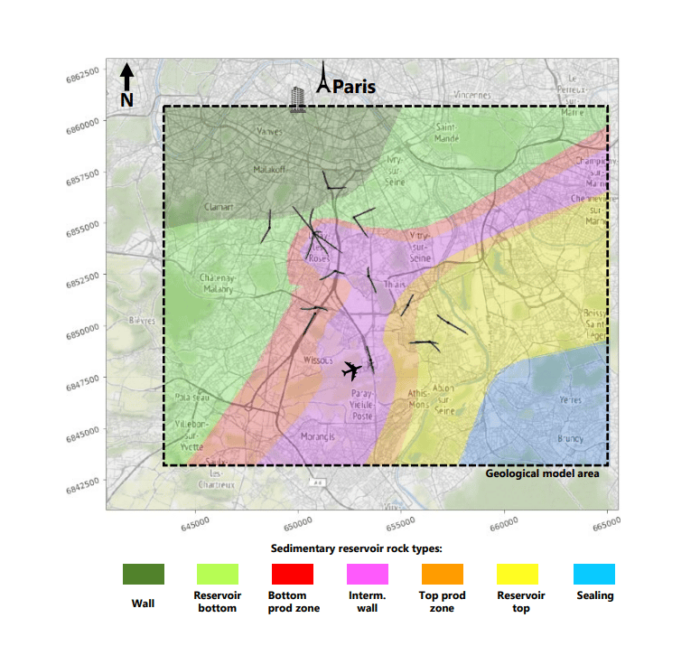 Location of the modelled sedimentary Paris Basin showing the reservoir layers.
Location of the modelled sedimentary Paris Basin showing the reservoir layers.A hope in the unseen
Other geothermal engineering teams have also turned to Seequent for help. In 2018, the eruption of Hawaii’s Kilauea volcano forced the evacuation of 2,000 residents, buried roads under lava and ash, and shut down the 38-megawatt Puna Geothermal Venture power plant. The plant’s operator, Ormat Technologies, used Seequent software to get the plant back online.
“Seequent’s Leapfrog Energy gave us a much better understanding of the characteristics and behavior of the subsurface both during the eruption and following it, ultimately helping to get the facility back up and running as quickly as possible,” said Simon Webbison, Ormat’s vice president of exploration and resource management. In Botswana, local researchers are using subsurface software models to better understand the Kasane Hot Springs, a geothermal hot spot at the confluence of the Chobe and the Zambezi rivers.
“It’s exciting to use digital solutions to help us explore, evaluate and make better decisions on the potential for geothermal energy in this region,” said Calistus Ramotoroko, an instructor at the Botswana International University of Science & Technology (BIUST).
Ramotoroko used Seequent software to build geological models that allow him to understand and monitor the Kasane geothermic project area. One day, they could help the country harvest its geothermic energy.
The bottom line
There may never be a hot spring under the Louvre or a geyser next to the Eiffel Tower. But digital models can help Paris harvest its underground energy treasure and reduce the French capital’s environmental footprint.
“No one has been into the heart of the Earth,” said Popineau. Now he – and others – can get a digital glimpse of what it might look like.

